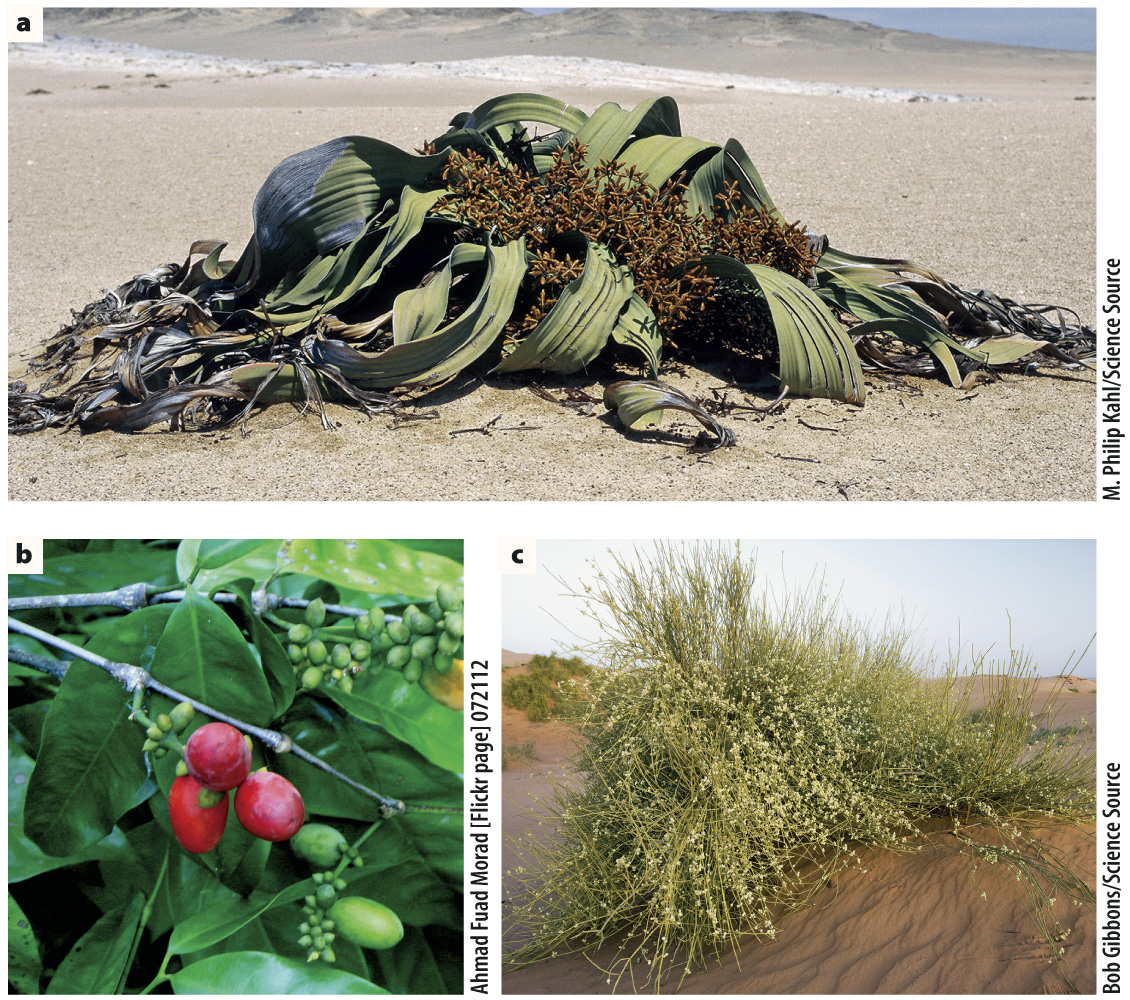Gnetophytes are gymnosperms that have independently evolved xylem vessels and double fertilization.
Gnetophytes are a small group of gymnosperms (about 90 species) made up of three genera that look completely different from one another (Fig. 33.18). Welwitschia mirabilis is found only in the deserts of southwestern Africa. It produces only two straplike leaves that elongate continuously from their base. Gnetum grow in tropical rain forests, where they form woody vines and small trees with large broad leaves. Ephedra, which is native to arid regions, produces shrubby plants with photosynthetic stems and tiny leaves.

Gnetophytes have long attracted the attention of plant biologists because they exhibit a number of traits that are typical of angiosperms, notably the formation of xylem vessels and double fertilization. However, double fertilization in gnetophytes does not result in the formation of a triploid tissue, as it does in angiosperms. Moreover, the water transport capacity of gnetophyte xylem, while higher than other gymnosperms, is less than that of the angiosperms sharing their habitats.
For years, many botanists viewed gnetophytes as the sister group of angiosperms. DNA analysis, however, indicates that gnetophytes are not closely related to the angiosperms but are, instead, more closely related to conifers. Thus, both xylem vessels and double fertilization evolved independently in this group.
The fossil record shows that gnetophytes originated as much as 200 million years ago, reaching their greatest diversity at approximately the same time as the angiosperms began to diversify. The subsequent decline in gnetophyte diversity may result from competition with angiosperms.
Quick Check 3 Double fertilization evolved independently in gnetophytes and in flowering plants. Name two other features usually associated with angiosperms that evolved independently in gymnosperms.
Quick Check 3 Answer
Xylem vessels evolved convergently in gnetophytes and angiosperms; insect pollination evolved convergently in cycads and angiosperms; fleshy tissues to facilitate seed dispersal evolved convergently in early seed plants (reflected today in ginkgo and cycad seeds), conifers such as juniper and yew, and flowering plants.